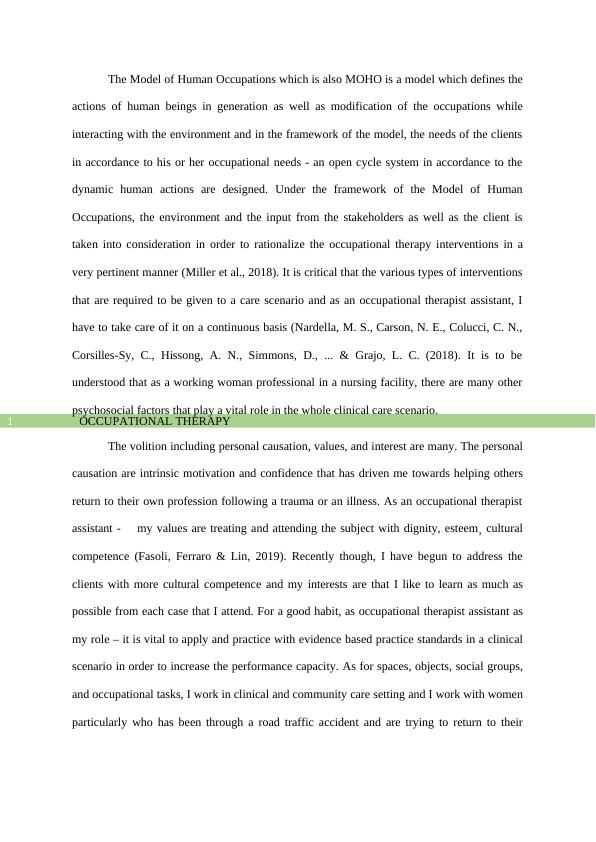The Model of Human Occupations(MOHO) | Occupational Therapy
PREFACE Preface. . . . . . . . . . . . . . . . . . . . . . . . . . . . . . . . . . . . . . . . S1 Definitions. . . . . . . . . . . . . . . . . . . . . . . . . . . . . . . . . . S1 Evolution of This Document. . . . . . . . . . . . . . . . . . . . S2 Vision for This Work . . . . . . . . . . . . . . . . . . . . . . . . . S3 Introduction. . . . . . . . . . . . . . . . . . . . . . . . . . . . . . . . . . . . . S3 Domain . . . . . . . . . . . . . . . . .
Added on 2022-08-19
The Model of Human Occupations(MOHO) | Occupational Therapy
PREFACE Preface. . . . . . . . . . . . . . . . . . . . . . . . . . . . . . . . . . . . . . . . S1 Definitions. . . . . . . . . . . . . . . . . . . . . . . . . . . . . . . . . . S1 Evolution of This Document. . . . . . . . . . . . . . . . . . . . S2 Vision for This Work . . . . . . . . . . . . . . . . . . . . . . . . . S3 Introduction. . . . . . . . . . . . . . . . . . . . . . . . . . . . . . . . . . . . . S3 Domain . . . . . . . . . . . . . . . . .
Added on 2022-08-19
End of preview
Want to access all the pages? Upload your documents or become a member.


